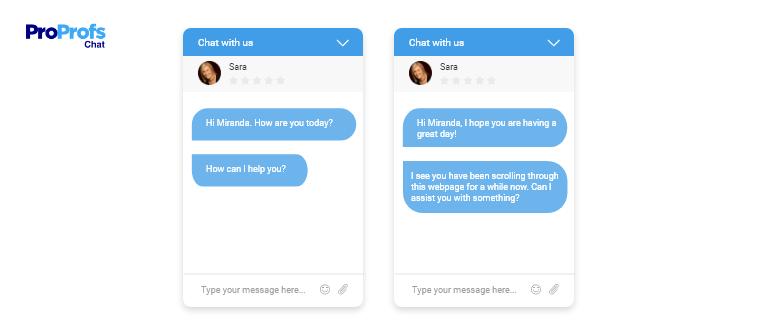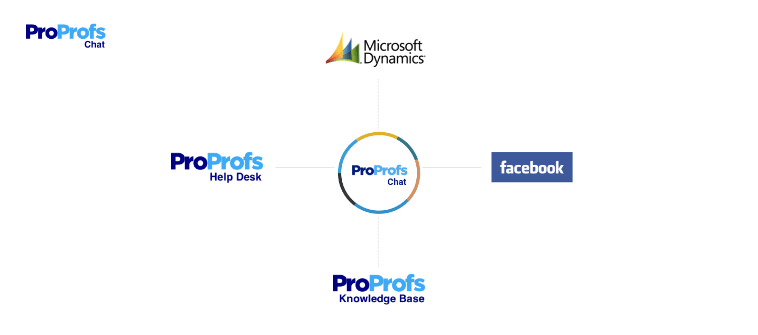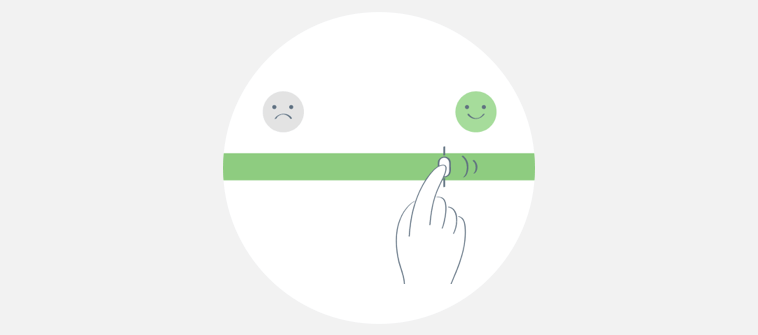“Your people keep directing me from one person to another.”
“I bought your product but it doesn’t deliver what it promised.”
“I haven’t heard a darn thing!”
If you’ve heard such customer concerns lately, then it means they’ve been through a bad customer service experience with your brand. It’s not like you wanted this, but let’s face it that your customers may come up with such complaints even in the future.
However, research confirms that 91% of customers who are unhappy with a brand will leave without complaining. In case you still have to handle customer complaints from your customers, then one of the possible reasons could be that they expect more from your brand.
That’s why it is important to understand customer complaints, why they matter, how beneficial are they for your business, and how to handle them without disappointing customers in the first place. In this blog, we aim to cover these areas in detail and help you tackle customer service complaints efficiently. Let’s start with the basics.
What are Customer Complaints?
Customer complaints are basically feedback received from customers citing a problem with a company’s product or service. While receiving complaints may seem like a challenge, they are quite beneficial at helping your business improve internal processes. They also help you improve your services and create better customer experience.
For example, an online food ordering platform called Seamless helps its customers order food from local restaurants. One of their customers actively complained about how he didn’t receive what he ordered. Although the customer wasn’t really upset, he did want to bring this issue to their notice.
The company took notice of it and asked the customer what his order number was to check why and how it got messed up. This really made the customer happy as he felt the company heard him and was ready to dive into action.
As one of the examples of customer complaints and solutions, you see how Seamless did not want to leave out any passive complaints unaddressed. What’s important, they understood the pain point and were ready to understand what went wrong and work on it.
It shows their willingness to respond to customer complaints and work towards avoiding such complaints in the future.
In a nutshell, customer complaints can help a business understand what went wrong with their services and work on improving the problem areas to avoid such instances in future.
Why Customer Complaints Matter
It is time we ask ourselves, “why is it important for my business to receive customer complaints?”
While customer service complaints pose a challenge to your reputation in the market if customers voice their complaints publicly, they still help you work on different problem areas and improve your business processes efficiently. But there’s more to the story.
Customer complaints act like a reality check for your business and can help you:
- Identify loopholes in your existing product or service quality
- Understand the customer’s perception towards your brand
- Enhance your product or service as per growing expectations
More than that, you get the opportunity to convert such customers into brand loyalists or advocates.
“If you manage to handle customer complaints quickly, then you are likely to turn disappointed customers into loyal customers.”
Tweet this
On the contrary, receiving complaints is good practice for your brand. They help you audit your services frequently and move towards delivering a final output that matches the customer expectations and your brand perception. That’s why receiving and resolving customer complaints is beneficial for your business.
8 Common Types of Customer Complaints
We’ve understood so far what customer complaints are and how they can benefit your business. Now, it is time we looked at the types of customer complaints your business can come across frequently.
1. Product Unavailability
Your products are out of stock, that’s a good sign for your business. But they being out of stock for long can make your customers impatient. This may result in constant calls for product availability or demand for a special order. Your customers may end up complaining if their need isn’t fulfilled immediately. This is one of the common customer complaints your operators can come across.
2. Bad Service or Product
There are times when customers don’t understand how your product works or your product may have bugs that hampers their experience. Such scenarios can prompt customers to reach out to your brand and complain about your offerings. They might end up blaming you for not fulfilling their requirements as stated. But irrespective of how they complain, you need to make sure they do not end up approaching others in the market for the same product.
3. Feature Request
Requesting a feature update or new feature all together cannot be seen as a complaint. But they are partially a result of your product not fulfilling a certain requirement for which they originally seeked your products.
4. No First Call Resolution
Studies show that 67% of customer churn is avoided if the service request is fulfilled during the first interaction.
First call resolution is important for your business. Even your customers expect you to resolve their issue during or at least immediately after the first call. This way you can avoid seeing your customers leave and approach your competitors.
Read More: How to Improve the First Contact Resolution
5. Bad Follow-Ups
Customers expect to have a follow-up conversation with your brand when their support ticket is still open. Some would even expect you to give them a chain of updates. That means if your agents aren’t prompt at offering updates or call up for follow-ups, then you are likely to see more customers complain and leave your brand.
6. Uninterested Support Reps
The type of conversation your agents have is likely to give an image to your customers about whether they are interested or not. If the agents fail to deliver the result as per expectations, some customers may end up thinking that they weren’t interested. Other times, customers may end up complaining how the agents failed to meet their expectations due to lack of interest or simply won’t get along at all.
If your agents fail to show they are invested in the customer’s problem, then they are likely to lose the customer.
7. Long Wait in Queue
Did you know that after about two minutes, customers are likely to hang up the phone and 34% of those customers won’t call back?
That means you can potentially lose a third of your customers because you failed to pick up their call or weren’t fast enough. Not only you lose them but you also leave them in a complaining mood where they might end up sharing their experience with others. Your agents need to understand that customers expect fast answers. They are not willing to sit with a receiver glued to their ear for hours.
8. Customers Repeating their Problem Multiple Times
Avoid making your customers repeat their problem to other operators. It’s understandable that you route customers to the right department or operator to help them resolve their problems faster. But it can upset your customer with issues and encourage them to complain more if they repeat their problem every time they speak with a new operator during the same call or chat.
12 Tips to Handle Customer Complaints
1. Identify the Type of Customer You’re Dealing With
Your first step to managing customer complaints is to understand the type of customer you’re going to deal with. You need to understand that each customer’s action and speech are motivated by different attitudes or needs.
Your business is likely to come across customers who:
- Aren’t shy about letting you know they are upset with your services
- May not complain about your services and take their business to your competitors
- End up getting in touch with your brand frequently
- May demand for high-end services as they pay more
- Expect you to take instant action because they are in a hurry
What’s more, you should also identify if they are your existing customers, new customers, or prospective buyers. This will enable your operators to deal better with customer complaints.
2. Cultivate a Personalized Tone During the Conversation
Did you know that friendly customer service representatives, who create a memorable experience, encourage 73% of customers to stick with a brand?
This goes on to show how customers appreciate your efforts towards personalizing their experience with your brand.
But the question is where do we start?
We’d say, focus on adding emotions to your conversations rather than making them sound robotic.

Clearly, the second chatbox shows a more personalized, friendlier approach that your operators can opt for when initiating a conversation with customers. This approach will help them learn how to deal with customer complaints as they engage with customers and encourage them to voice their complaints easily.
3. Practice to ‘Listen’ Before You Respond to Customer Complaints
Since your customers are here to complain, it’s always advised to hear them out first. It’s not like you’re helping them get everything out of their systems. It’s a good practice when dealing with customer complaints as it shows your effort to understand why in the first place they faced a challenge such as this and if they’ve been troubled by it before.
Once you hear them out, do repeat their customer service complaints back to let them know you’ve understood and are now working towards giving them a solution.
4. Provide the Best Possible Solution for Customer Complaints
There could be various reasons that result in customer complaints. However, your job is to make sure that these problems are resolved with the best possible solution at hand.
Even if you end up taking measures like escalating a chat conversation into a phone call or providing a refund in case order doesn’t reach the customer as a form of apology, you’ll have to do it all. Understand that when a customer complaint gets registered with your brand, you know that it isn’t possible to walk away from it.
You’ll have to come up with a great service recovery plan that helps your customers walk away feeling better about your brand again.
5. Offer Relevant Information as Customer Moves Across Channels
In a research, 72% of consumers consider it poor customer service if they had to explain their problem to multiple people.
In a nutshell, you need an integrated customer support system that helps your customers avoid repeating their problems every time they interact with a different operator via a different platform. An integrated customer support system will enable your support operators to create a unified experience for customers as all the platforms under this system will be tied to each other.

For example, when you get ProProfs Chat onboard, you get the option of integrating it with other platforms such as knowledge base, help desk, customer relationship management (CRM) software and even with social media platforms like Facebook at the same time. Once integrated, the data captured can be accessed by any operator.
So even if your customers are transferred to another department or platform for further resolution, they won’t have to repeat their problem again. That’s another way your team will learn how to handle a customer complaint efficiently.
6. Own Your Mistakes
It is important to take ownership when customers reach out to your brand with a complaint.
For example, when customers communicate their challenge, make sure you use statements like:
- If I was in your spot, I would be disappointed too.
- I’m sorry to hear that, could you please give me some time to help you connect with the relevant department.
- I deeply regret the inconvenience. Please stay connected as I look into your matter with the technical experts.
When you take ownership of your mistakes, it gives your customers the confidence that your brand is here to hear them out and they’ll have a solution soon.
7. Go the Extra Mile
There is a reason why some brands end up creating a success story even when it originally started off with a complaint. Their secret to this success is to go an extra mile for their customers when they need it the most.
For example, an online shoe store like Zappos is known for creating multiple success stories by helping their customers in the most unexpected and unique way possible. They’ve helped the best man, Jay, get an overnight replacement for a pair of shoes at no cost when the original order was routed to the wrong location. What’s more, they even upgraded this best man to a VIP account and offered a complete refund.
Wow, now that’s what we call going an extra mile to create delightful experiences for customers.
8. Ask the Right Questions
If you’re not asking the right questions, you’d likely annoy your customers who’ve already reached out to you with complaints.
Instead of asking “what do you mean by ____?”, “Could you expand on that point further?” or saying “could you provide us an example.” think of questions that help you capture more information and come up with ways on handling customer complaints better.
Try phrasing your questions in the following manner:
- Can you please help me understand this a bit better? It would help us avoid any assumptions here. 🙂
- What was your driving force to try out our product and did it help you overcome a particular challenge?
- How long have you faced this challenge and is this your first time approaching us for the same?
You gain better information and understanding of the challenge your customer is facing currently. At the same time, you put a point across that you are here till the time a solution surfaces. In short, phrasing your questions this way while responding to customer complaints helps them understand that you are empathetic and doing whatever it takes to solve it right away.
9. Set Realistic Expectations
Sometimes customers can expect you to deliver a solution faster and end up thinking that it’s going to come at any moment. This may be possible in some situations, and it could take longer in some cases. It is really important to set realistic expectations.
Be upfront and let them know that their case is now escalated to another team and they’ll get back with a solution within the next 3-5 working days. However, let them know that they’ll be informed in case of latest updates.
This helps your operators get more time to work around strategies on dealing with customer complaints without disappointing them. This transparency helps your team and you set the right expectations and meet commitments efficiently.
Read More: How to Meet & Exceed Customer Expectations
10. Track & Resolve Common Customer Complaints
To improve the overall customer experience, it is important for your team to track incoming customer feedback on a regular basis.
For example, you notice that a lot of your website visitors return or exit from a specific product page. That means there is a challenge they face when landing on that particular website page. What you can do here is add a small customer feedback form that either pops up when the visitor is about to leave or lands on that page with the tools like Qualaroo.
This will enable you to track and identify the common challenge they’ve faced when landing on that particular page. Once identified, your team and you can come up with a plausible solution faster and resolve the challenge. Do make sure that you identify these sources for common customer complaints faster to avoid outcomes such as losing customers or increased bounce rate.
11. Create Help Center to Answer Common Complaints
As one of the tips to handle customer complaints, this one will also prove beneficial. You can use ProProfs Knowledge Base to create a help center to help customers find answers to common questions or complaints they have with your products or services.
Once you create the help center, it will be easier for you to:
- Resolve customer complaints faster
- Resolve customer complaints any time of the day
- Easily reduce the incoming support tickets
- Reduce support cost
- Onboard customers efficiently by offering them instant access to product knowledge
12. Use the Right Customer Support Tool to Address Complaints
The use of the right customer support tools is essential for you to make sure that no customer complaint goes unanswered. You can start with the use of live chat software for your support process.
With the addition of live chat, you can manage to:
- Route visitors to the right department and resolve their complaints faster
- Initiate proactive conversation that helps you get an edge and answer their brimming questions faster
- Capture more details of what they’re searching or have to complain about with pre-chat form
What’s more, you can integrate your live chat solution with a help desk ticketing software to make sure that you never miss out on a support opportunity. All your missed chats or offline messages can convert into a ticket number that agents can look into once they are back online.
Besides a live chat, you can also use a customer feedback tool like survey maker to capture what’s on your customer’s mind and how they view your services. It will help you understand their perspective and expectations from your services better. What’s more, you can use that feedback to improve your products or services efficiently.
You can also check out a knowledge base for your customer support process. This customer support tool is efficient at helping its users find answers to frequently asked questions faster without approaching your support agents in the first place.
Handle Customer Complaints the Right Way
There is no way that your products or services would ever be free from customer complaints. Growing expectations and needs will always prompt your customers to ask for more. If anything, understanding them will help your business stay up to date with the competitive market and make relevant improvements further.
However, it is important to self-identify common types of complaints your business is likely to face. These can surface due to product unavailability, bad product or service quality, long support queues and more. But once understood, it will be easier for your business to come up with better solutions to resolve these complaints efficiently.
Now that we’ve understood different types of customer complaints and how to handle them like a pro, let’s take a look at some of the frequently asked questions below.
What to do when the customer is irate?
When you come across irate customers, remember to remain calm and practice active listening to let your customer express their concerns. Try to repeat back what the customer is saying to let them know you are following what their concern is. Besides that, always thank them for bringing the issue to their notice and explain the steps to them patiently to arrive at a solution faster. Also make sure that you take regular follow-ups to know if the solution offered has helped them in the longer run.
What are the steps to handling customer complaints?
You should listen to what your customers are saying and empathize with them and share that you might have felt the same in case you were in their shoes. Evaluate and offer a solution that is likely to resolve their problem faster. You can even help them execute the solution if the need be. And finally, do not forget to take follow-ups with them in regular intervals.
What customers really want when something goes wrong?
The first thing your customers really want is to connect with your brand instantly. That gives them the satisfaction that they aren’t far from the solution. And the next expectation after connecting with your brand is to get a first contact resolution so they don’t have to approach for support again and again.
What are the best platforms to resolve customer complaints?
You need to resolve customer complaints instantly. That means you need to have a platform like live chat to help you resolve customer complaints right away. Besides that, you can also integrate the use of a knowledge base, help desk ticketing system, phone support, and even use social media profiles to offer support to customers.
FREE. All Features. FOREVER!
Try our Forever FREE account with all premium features!







